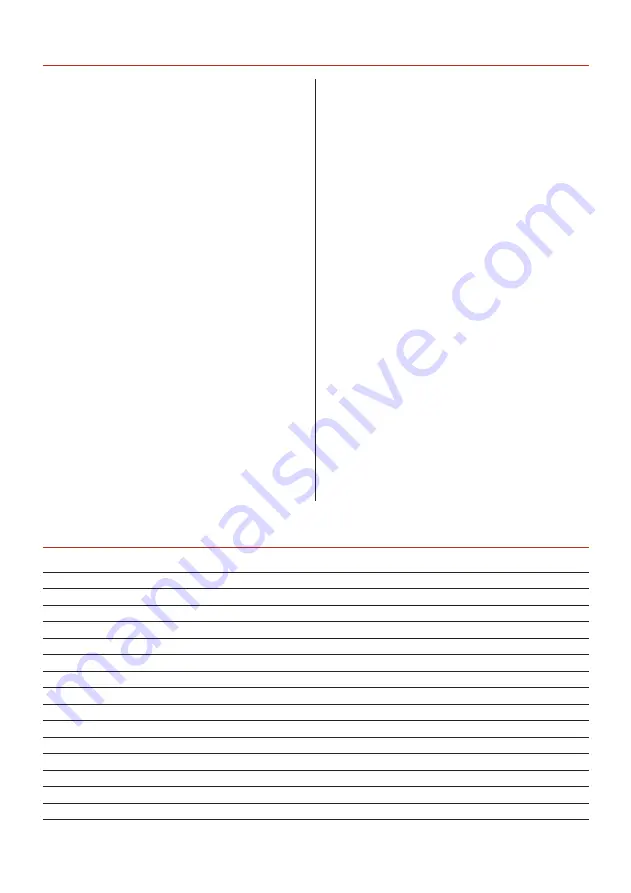
SPECIFIC SAFETY PRECAUTIONS FOR SANDING MACHINES
5
DO NOT sand very small pieces of work with bare hands;
try to construct some form of holder.
Make sure you are comfortable before you start work,
balanced, not reaching etc. If the work you are carrying
out is liable to generate excessive grit or dust or chips
wear the appropriate safety clothing, goggles, masks etc.
If the work operation appears to be excessively noisy wear
ear-defenders. If you wear your hair in a long style wearing
a cap, safety helmet, hairnet, even a sweatband, will
minimise the possibility of your hair being caught up in
the rotating parts of the machine. Likewise, consideration
should be given to the removal of rings and wristwatches
if these are liable to be a ‘snag’ hazard.
DO NOT work with cutting/abrasive tools of any
description if you are tired, your attention is wandering
or you are being subjected to distraction.
DO NOT use the machine within the designated safety
areas of flammable liquid stores or in areas where there
may be volatile gases.
Check that sanding surfaces are still sufficiently abrasive
to carry out the work you intend. Sanding belt cleaning
sticks are an efficient method of prolonging the life of
the belts and discs and will also maintain their operating
performance.
Check that the belts or discs are undamaged; torn edges
can pick up on the work piece and will cause the medium
to tear, often very rapidly with accompanying sharp
flapping edges.
Always offer the work piece to the belt/disc so that the
motion carries the work against the restraining surface i.e.
the work stop or the table (use the right hand side of the
disc).
DO NOT press too heavily against the sanding surface, all
this will do is slow the sander down. Remember, sanders
work by removing small particles of material quickly and
heavy pressure works adversely to the cutting process.
Further, it will accelerate the rate of ‘clogging’ of the
abrasive surfaces, rendering the machine less efficient.
If you are attempting to sand inside curves (over the
‘tracking drum’) do not press at all, other than to keep the
work piece in contact with the surface, any pressure could
upset the tracking geometry. As there is no cushioning
effect to the belt passing around the drum, expect an
added vibration and compensate for it.
Sanding of certain types of timber may make the fitting
of dust extraction mandatory in order to comply with the
directives of the HSE. However, even if it is not mandatory,
it is strongly recommended that you consider fitting dust
extraction. It will certainly reduce the level of dust and grit,
and as it helps to remove the waste quicker will certainly
prolong the longevity of the abrasive.
Above all, OBSERVE…. make sure you know what is
happening around you, and USE YOUR COMMON
SENSE.
Code 107680
Model AW200BDS
Rating Workshop
Power
550W 230V 50Hz 1Ph
Duty Cycle
S1 550W
Belt Speed
520m/min
Disc Speed
2,980 rpm
Disc Table Tilt
0˚- 45˚
Belt Tilt
0˚- 90˚
Disc Size
200 mm
Belt Size
100 x 914 mm
Table Size (Sanding Disc)
264 x 190 mm
Table Size (Sanding Belt)
170 x 120 mm
Dust Extraction Outlet
63 mm
Overall L x W x H
590 x 520 x 600 mm
Weight
26 kg
SPECIFICATION
Содержание Workshop AW200BDS
Страница 1: ...AW200BDS Belt Disc Sander Code 107680 Original Instructions AT 22 04 2022 BOOK VERSION 06 ...
Страница 8: ...ASSEMBLY 8 Raised quadrant 17 21 18 22 19 23 20 24 Machined slot Engineer s square Secure C G ...
Страница 19: ...EXPLODED DIAGRAMS LISTS 19 ...
Страница 22: ...WIRING DIAGRAM 22 ...
Страница 23: ...NOTES 23 ...






































